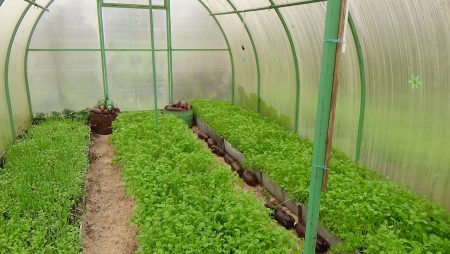
Proponents of organic farming consider sideration one of the best ways to increase soil fertility.
The use of plants as fertilizers is environmentally safe and improves not only the composition, but also the structure of the soil. Sowing green manure in a greenhouse is advisable, since it partially replaces crop rotation, solving the problem of intensive soil depletion and the accumulation of harmful microflora in it.
Content
The effect of green manure on the soil
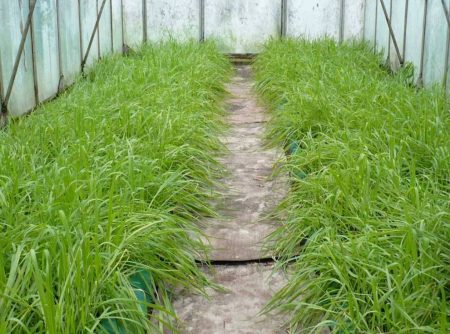
Siderata is sown on the site in between the cultivation of the main crops in order to restore fertility and improve soil quality. Plants are suitable for this, upon decomposition of which a large volume of humus is produced. It is this substance, the maximum proportion of which is contained in chernozems (10-15%), that determines the fertility of the soil.
Siderats are valuable not only as fertilizer, which can be applied as compost. Plants are grown directly on the bed, because already during the growing season they improve soil performance:
- structure - loosen the soil, increasing its permeability to oxygen and moisture;
- microbiological indicators - stimulate the reproduction of beneficial microorganisms that synthesize nitrogen and suppress pathogenic microflora in the soil;
- purity - inhibit the growth of weeds, some species clean the soil from fungi, viruses, soil pests or larvae.
Siderat for tomatoes in the greenhouse
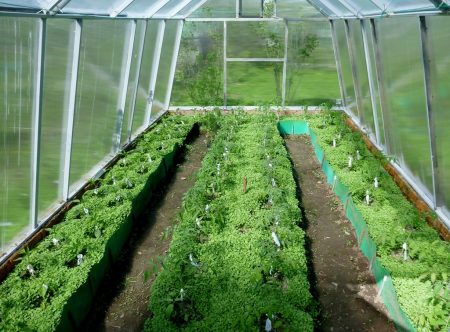
In most cases, the lack of a beneficial effect or even harm to planting due to the use of sideration is due to the wrong choice of crops for sowing. When selecting plants, you should consider:
- main culture;
- nature of the soil;
- sowing dates;
- the presence of pests or diseases.
Siderat for Tomatoes
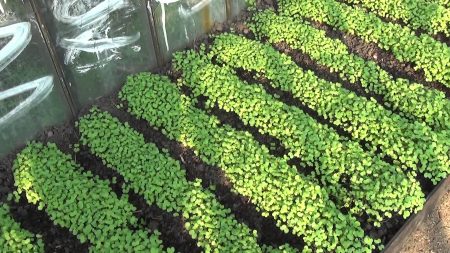
Planting of vegetables should not be alternated with the planting of nightshade siderates (physalis, datura), since tomatoes belong to the same family, therefore, they have similar nutritional needs and are subject to the same diseases and pests. Instead of enriching the soil with beneficial elements and cleansing, nightshade plants will take away nutrition from tomatoes and exacerbate damage by fungus or insects.
Legumes (especially peas and fodder beans) and cruciferous crops (mustard, rape) will be the most effective option for improving soil depleted by many years of tomato planting. Good results in this capacity will be shown by vetch, clover, rye, oats, buckwheat, goat, rape, melilot, lupine, alfalfa and phacelia.
Attention!
Poisonous plants should not be used for sideration, since when toxins, the toxins contained in their tissues will also be absorbed by the soil. Forbidden crops include dope, hogweed, nightshade and others.
One kind of grass should not be sown annually; it is necessary to alternate or jointly plant crops from different families (legumes, cereals, cruciferous). One of the common mistakes is the joint sowing of different cultures, but belonging to the same family, as a result of which the plants compete for moisture and nutrition, grow worse and give less nutrients to the soil. Perennial plants should not be used, since removing them from the site can be difficult and siderat will turn into a weed.
Soil features
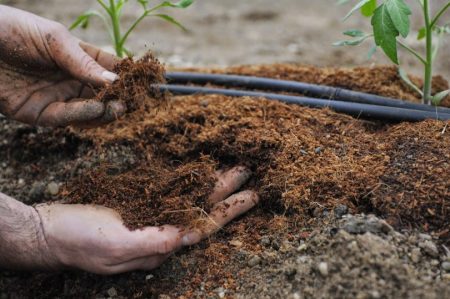
With the help of green manure, soil parameters can be adjusted in the direction optimal for the main crop.For the cultivation of tomatoes requires loose soil with low acidity (pH 6.0-6.8). The type is suitable for chernozem, sandy loam or loamy soils.
- Heavy clay soil. It is necessary to loosen the soil, among other measures, you can sow plants whose roots will make the soil structure easier. Among the siderates suitable for tomatoes, beans, alfalfa and lupine will have this effect. Alfalfa is a better option as a source of phosphorus, a deficiency of which is likely on clay soil, especially with high acidity. To enrich the soil with phosphorus, you can sow peas, fatseliya or white mustard.
- Sandy soil. Soils of this type are characterized by a deficit of humus and biomass; in such areas, siderates are most useful, primarily lupine. Sandy soils quickly lose nitrogen, to restore which you can sow vetch, peas or beans. The second place among the sources of nitrogen is occupied by alfalfa, phacelia, and lupine.
- Peat soil. As in the case of sandy soil, it is necessary to increase the proportion of humus in the soil. In addition, potassium saturation, which is rich in phacelia, is required.
- Acidic soil. Mustard, phacelia and alfalfa have the ability to reduce acidity, but to obtain a noticeable result, it is necessary to sow crops for several years.
- Alkaline soil. In this case, siderates can be useful as sources of sulfur, a deficiency of which often develops on low acid soils. Sowing of white mustard is recommended, while legumes and cruciferous crops should be discarded.
Sowing dates
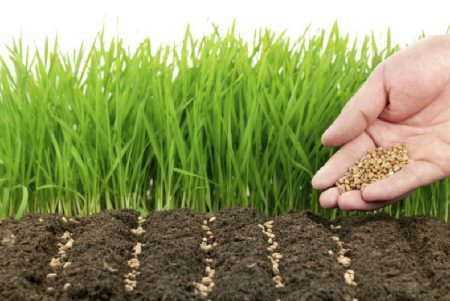
Siderata can be divided into winter, early and thermophilic. Sowing time is determined not only by the plant, but by the way of sideration.
- Sowing in the winter. In late autumn, the plot is sown with winter crops, which are mowed in the spring. Rye, alfalfa, rapeseed, clover, oats are suitable.
- Spring sowing. It is carried out when establishing a positive average daily temperature. Use fatseliya or mustard, which must be cut 2-3 weeks before transplanting seedlings.
- Co-cultivation. Heat-loving siderates (vetch, bean, lupine) can be sown between rows of tomatoes, and after mowing, mulch the beds.
Important!
During flowering, green manure will serve as a bait for honey insects to plant tomatoes, but they should be mowed before seed formation.
- Autumn sowing. Plants are sown after harvest, and mowed on the eve of winter. The same crops are suitable as for the spring procedure, plus vetch - too thermophilic for planting after winter, the plant will grow well in late summer, and the ability to grow rapidly will allow it to gain the necessary green mass before the cold weather.
Pests and diseases
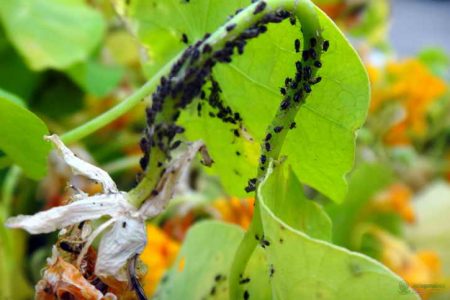
Some cultures have the ability to deter harmful insects or attract beneficial ones that feed on pests. In addition, there are plants that secrete fungicidal and antibacterial substances, which allows them to be used for the prevention and prevention of relapses in the beds.
| Pest or disease of tomatoes | Healthy siderat |
| nematode | radish, phacelia |
| the bear | lupine |
| wireworm | mustard |
| beetle larva | lupine |
| aphid | phacelia |
| late blight | phacelia, mustard |
| scab | mustard |
| rot | phacelia |
Autumn sowing of green manure in the greenhouse
The timing of sowing grass fertilizers in the fall depends on the region and the heat-insulating qualities of the greenhouse - before establishing subzero temperatures, plants should reach 10-15 cm in height. For the regions of the north and the middle zone, the optimal time for sowing is the end of August, in the southern regions the procedure can be carried out in early September. Winter green manure is sown in late September or early October, on the eve of frost.
Sowing technology
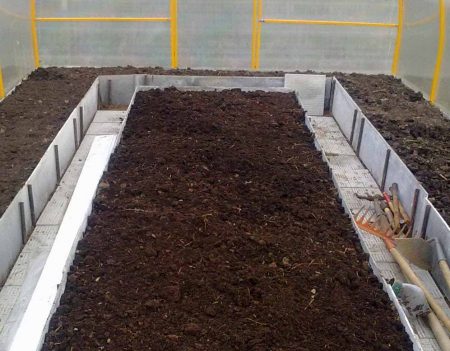
Before planting green manure, they carry out all the necessary sanitary work - cleaning tops and weeds from the beds, cleaning, disinfection of the greenhouse.
- It is necessary to loosen the soil to a depth of 5-7 cm and level with a rake.
- You can make furrows, but sowing with a continuous blade is also allowed.
- Sow should be as thick as possible. For even sowing, it is recommended to mix the seeds with sand in a 1: 1 ratio.
- Seeds are planted in the ground with a rake. If winter crops are sown, it is recommended to sprinkle a thin layer of compost on top.
- Sowing needs to be watered.
Subsequently, the planting should be watered abundantly once a week.
When and how to cut
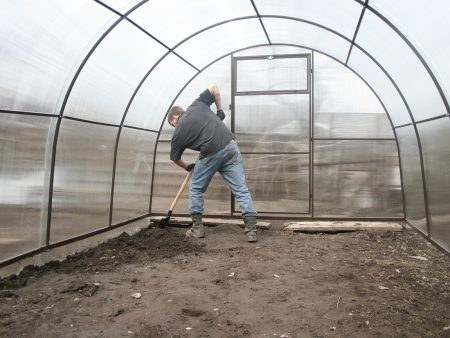
Siderata is cut in the fall or, in the case of winter crops, in the spring, when plants grow to 20-30 cm.Crops with a superficial root system (clover, lupine, alfalfa, mustard) are cut and embedded in the ground with a plane cutter, loosening it 10 cm in depth. After plants with powerful roots (rye), plowing or deep digging of the soil, which is carried out before planting tomatoes, is required. Experienced gardeners prefer not to resort to this technique, since beneficial microorganisms die when moving soil layers.
If the mowing procedure is carried out in the spring, 3 weeks before transplanting the seedlings, the soil must be poured with EM preparations to accelerate the processing of plant residues. Watering is repeated every week, but they are effective only at an average daily temperature of at least 8 ° C.
Mowed stems of plants grown elsewhere can be stacked between rows of tomatoes, using them as mulch.
Advice!
Siderata can occupy shaded areas of the garden where other crops do not take root - many grow in the shade, but do not give flowers, which in this case is not an obstacle. Deficiency of sunlight stimulates the extension of stems and leaves, that is, the rapid growth of the vegetative mass in phacelia, mustard, vetch, oily radish.
Advantages and disadvantages of siderates
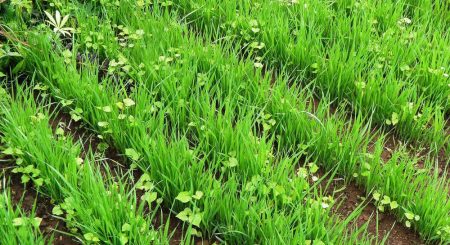
This method of fertilizing the soil has its supporters and opponents. Among the arguments for the use of siderates, it should be noted:
- the absolute naturalness of the fertilizer, a guarantee of the purity of the future crop;
- a small degree of interference in natural processes, safety for soil microflora and beneficial insects (earthworms, etc.);
- greater benefits of plant nitrogen for tomatoes compared to the mineral form;
- high stability of organic substances, which saturate the soil siderates;
- the relative cheapness of the method (in comparison with the purchase of manure or mineral fertilizers);
- replacing crop rotation impossible in greenhouses.
The disadvantages of the method include its complexity. Some gardeners believe that the results do not pay back the time and effort.
The effect of the use of siderates should not be expected soon. Sowing should be carried out for several years before the soil is completely restored, especially when it comes to poor, significantly depleted soils. Subsequently, with a regular procedure, it is possible to achieve an increase in the yield of tomatoes by almost 2 times. But improper sideration, in particular, errors in the choice of plants for sowing, can reduce the yield of tomato planting.




 Low-growing tomatoes, without pinching: 5 of the most delicious varieties
Low-growing tomatoes, without pinching: 5 of the most delicious varieties Why tomato seedlings grow poorly
Why tomato seedlings grow poorly We grow a tomato in a shell
We grow a tomato in a shell Growing tomatoes without watering according to the method of Kazarin
Growing tomatoes without watering according to the method of Kazarin